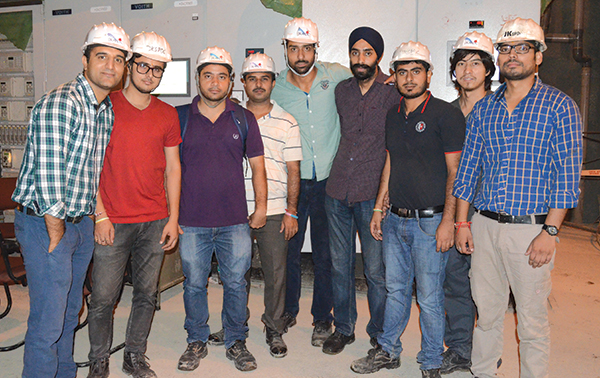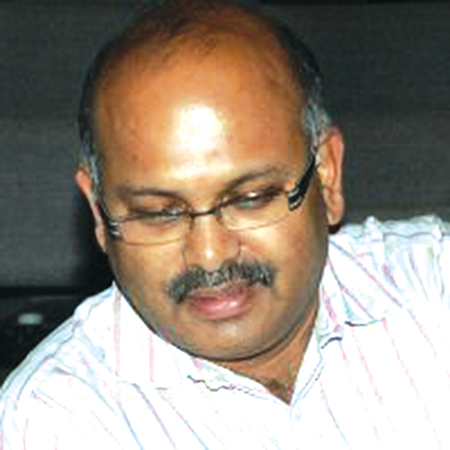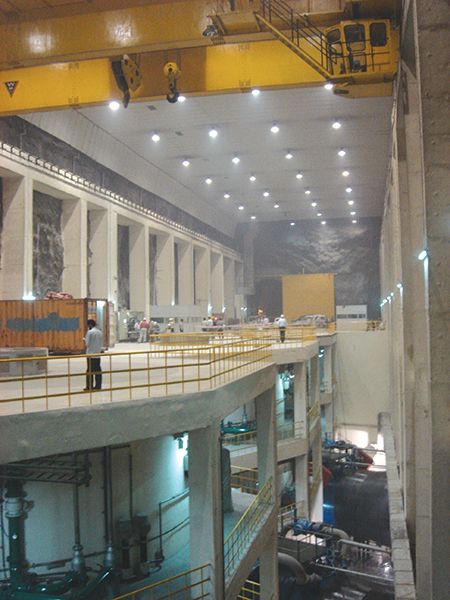Baglihar is the game changer in J&K’s energy sector but the gain would go down the drain if the policymakers do not affect the rudimentary shifts in the State Power Development Corporation (SPDC) and help it seize the opportunity and march ahead, reports Masood Hussain
September 2011 was historic in the history of SPDC. A wholly owned J&K government generation utility since 1995, it appointed nearly 100 junior engineers in civil, electrical and mechanical streams. For two years, they were on a consolidated monthly package of Rs 15960. Once regularized, they started getting Rs 33,000. But finding their counterparts getting nearly double the package in NHPC and the Chenab Valley Power Projects (CVPP) that PDC owns nearly 49% of, 54 of them resigned. Some moved to CVPP but most were adjusted in the Power Development Department.
“We are working here simply to oversee that J&K comes out of the energy misery it has been living in for decades,” said a young engineer who managed his deputation back to Baglihar after getting adjusted in PDD. “Engineers working in similar projects are given lot of allowances, and facilities but we live in ramshackle huts, far away from our families in hostile conditions just because we love the job. But our crisis is that nobody recognizes it.”
Another engineer speaking off the record said when Baglihar-I started, the SPDC gave its operations to NHPC for Rs 75 crore a year. “We managed both stages for less than Rs 7 crore a year but nobody is looking at us,” the engineer said. “In the Stage-II testing phase, we generated energy for more than Rs 25 crore and not a single person from the state government came to us for saying a simple thank you.”
Nobody bothers to even build a hospital at Chanderkote, the engineers lamented. The existing setup for projects of this scale should have fetched us a Kendriya Vidyala School and many allowances linked to generation targets and location disadvantages.
Syed Javid Nazir was a JE with Baglihar since 2002. He was regularized in January 2010 and was getting a salary of Rs 35,165. A highly capable engineer, he was awarded specially for his capacity. On July 30, 2013 when he was on his way to the project, he was killed in a road accident. His widow lacked resources to manage education of her two orphans.
“Had he been a government employee, his family would have got a family pension @ Rs. 33,330/- per month from the date of his death which would sum up to about Rs. 28 lakhs for 7 years,” the corporation said in a note to its 10-member Board led by Chief Minister. “Besides, the family would have also been eligible to the family pension thereafter at tapering basis. Unfortunately, as these dispensations are not available to the employees of the Corporation, the family of the deceased officer will not be getting any benefits from the Corporation.”
The Board approved “a one-time ex-gratia relief of Rs 10 lakhs (Rupees ten lakhs only) as goodwill gesture” to the family of the deceased. When a corporation earns Rs 1500 crore a year, the fate of its employees can not attract talent.
Create Own Cadre

Like other corporations, the SPDC is also being run on an ad-hoc basis. Engineers from different engineering services are being deputed for two-year durations and this process is hitting at the continuity within the organization. “Everybody being deputed wants to complete his tenure and leave,” admitted one engineer, “It results in lack of ownership by the deputees.” In SPDC, there is no long-term loyalty that individuals have towards the organization because they do not belong to it.
Usually, a former bureaucrat said, power, finance and various engineering departments depute their officials to SPDC at the fag end of their service career. Apart from low productivety, all these officials take away their retirement benefits from the SPDC which tells upon its viability.
Politicians have used corporations as dumping grounds and SPDC, to a good extent, is not an exception. Off late, the new dispensation has started weeding out individuals who had emerged as experts in their own fields after handling Baglihar for more than a decade. “They should have been adjusted within the organization because they have evolved into experts but they were shown the door disgracefully,” said an insider. “This is impacting the future of the organization.”
SPDC had already hired the services of Ernst and Young (E&Y) for restructuring the organization and it was approved as early as September 2013. There has not been any follow up since then.
E&Y report is the blueprint for SPDC’s next jump to success and offers clear structure in identifying, developing new projects, ensuring their timely completion and subsequent set up for operations and maintenance. Instead of the existing difused responsibility, the E&Y restructuring offers a single point responsibility for managing commercial aspects which are key to SPDC’s success.
It has also suggested clubbing and closures of various divisions. But the political intervention has prevented its implementation.

Pay For Power
SPDC generations are wheeled to PDD and consumed across J&K. PDD seldom pays for the energy it consumes. The utility is facing the crisis because its promoter and power purchaser is one. While it has never kept the corporation hungry for funds, the government has also never cleared the bills that SPDC raised.
“We have been showing profit for the last five years on which we pay tax but these are just paper adjustments because we never had cash,” a senior SPDC official said. “These adjustments are real but cashless and these are vital to keep the balance sheet clean.” In fact, its “tainted” balance sheet is reducing its ranking and making funds costlier by 0.50%.
“From the year 1998-99 to 2013-14, the PDD has paid SPDC Rs 1927.89 crore against the billed amount of Rs 4030.12 crore leaving a gap of Rs 2102.23,” a former SPDC officer said. “In comparison, the corporation has received plan assistance of Rs 3406.84 crore from PDD between 1995-96 and 2013-14.”
The Board in its last meeting agreed that the arrears on account of sale of energy (Rs 2302.72 crore) be deducted from the received plan assistance (Rs 3406.84 crore). After deducting other liabilities, it created a situation that PDD’s investment in the corporation had a net surplus of Rs 1419.47 crore. The same amount was added to the paltry paid up capital of five crore rupees and converted into 14194700 shares of Rs 1000 each. But it did not happen. Now the situation is that PDD’s accumulated liability on power purchase with SPDC is Rs 3200 crore.
Move To Market
With PDD neither paying the bills nor adjusting its plan investment against the surging liability, SPDC is in dire straits. It has blocked its way from entering the stock market to emerge as the second listed company from J&K.
At the peak of Baglihar implementation when the SPDC was highly motivated and full of energy, it had appointed a consultant for the spade work. Then, as part of the unbundling of power distribution system, when the government intended creating two small companies for distributing power in Kashmir and Jammu regions to reduce AT&C losses, SPDC was keen to own a utility for trading power.
“We had a blueprint ready and the trading utility was viable,” Basharat Dhar, the then MD SPDC said. “We were taking care of the one-third requirement of the state power consumption and within a decade we would have been selling outside and it would have been great to gain experience and create institutional infrastructure for that.” Dhar said the trading arm would have come handy for various Independent Power Producers (IPP) who have invested nearly Rs 1000 crore in the power sector.
But going to market means a clean balance sheet that SPDC still lacks even after booking profit for five years now. In such a situation, SPDC planned going public with its trading arm. “Then, we planned piggybacking a utility that is already a public limited company as an affiliate and within a few years the trading arm would automatically become a full fledged listed company.” The major advantage the new utility would have that it would take off with a clean slate, a precondition that SDPC itself still lacks.

Assert On Assets
Even without Baglihar, the SPDC has enormous assets across the state. It owns 19 small and micro projects with installed capacity of 308.70 MWs besides 175-MW of punitively exorbitant thermal power. With every small and big project it has vast swathes of land and series of housing colonies. Since most of the housing colonies have restricted use after the projects get into generation, these become part of the loot, both for influential and the government.
There are two issues that SPDC is confronted with. Firstly, the land and the buildings attached to its projects. First the security forces which have occupied its 55 buildings and a land of 270 kanals. While the rent of Rs 14.30 crore is outstanding for the period between 1990 to 2014, the assets are not being returned.
Secondly, most of its projects are loss-making. All are generating but the input costs are too huge. In certain cases, it is because the political intervention forces the SPDC to keep certain strength of human resource at a particular project which makes the installation economically unviable.
If these two issues are addressed, SPDC’s balance sheet will be robust.
In 2012-13, its 21 operations in hydro and thermal fronts recorded an income of Rs 104,54,57,284 against an expenditure of Rs 189,81,83,243 thus booking a loss of Rs 85,27,25,959. In fact all the 21 projects are still loss making. Had Baglihar not been around, SPDC would have been like the state owned J&K Industries Ltd; surviving by selling its assets.
“The corporation must get absolute autonomy to decide the fate of these projects which do not make a huge earning or are in loss,” one senior official who served the SPDC for more than 15 years said. “These small projects can either be auctioned to IPPs or simply shut down because these are bleeding the corporation.” Another option is that the sale proceeds of a project could be invested in another to make it viable.
Prioritize Professionalism
SPDC must have a more professional Board and it must get a complete autonomy to decide its future as a viable commercial utility. A professional board can still be led by an elected Chief Minister initially. But for that the first step is to de-politicize it.
“It shocks the industry (a reference to mainland India’s surging energy sector) when they are told that there has not been a meeting of the Board of Directors for the last 14 months because the Board does not exist,” an erstwhile insider said. “It jolts them further when they hear that SPDC which has earned a profit of Rs 878 crore in last three years has no MD for last six months now.” In fact, the last power secratary, Sundeep K Nayak, also holding the charge of MD SPDC was shifted after seven months at a time when he was on way to Baglihar to finalise the high-profile inaguration.
In the absence ofa Board, some key projects like New Ganderbal are not taking off. Interestingly, major investors in energy sector like REC and PFC reduce the interest on loans if MD of an electrical utility has tenure beyond three years because it means continuation of a policy. But SPDC had 12 MDs in 15 years and for one-third of the time, SPDC leadership was an “additional” charge.
It is high time for the politicians to stop playing games. J&K cannot afford permitting them destroy the state’s new energy futures.
















